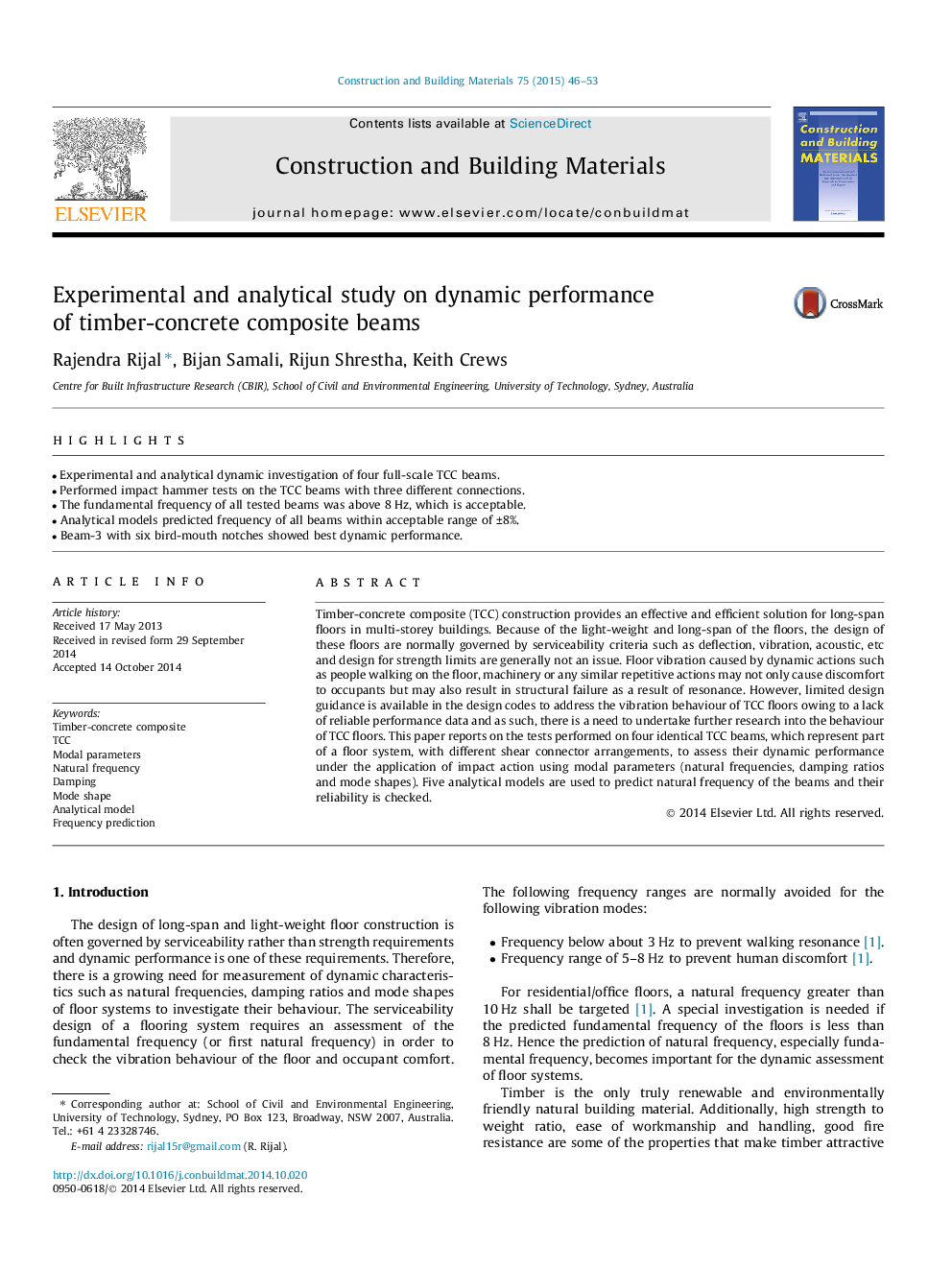| Article ID | Journal | Published Year | Pages | File Type |
|---|---|---|---|---|
| 6721475 | Construction and Building Materials | 2015 | 8 Pages |
Abstract
Timber-concrete composite (TCC) construction provides an effective and efficient solution for long-span floors in multi-storey buildings. Because of the light-weight and long-span of the floors, the design of these floors are normally governed by serviceability criteria such as deflection, vibration, acoustic, etc and design for strength limits are generally not an issue. Floor vibration caused by dynamic actions such as people walking on the floor, machinery or any similar repetitive actions may not only cause discomfort to occupants but may also result in structural failure as a result of resonance. However, limited design guidance is available in the design codes to address the vibration behaviour of TCC floors owing to a lack of reliable performance data and as such, there is a need to undertake further research into the behaviour of TCC floors. This paper reports on the tests performed on four identical TCC beams, which represent part of a floor system, with different shear connector arrangements, to assess their dynamic performance under the application of impact action using modal parameters (natural frequencies, damping ratios and mode shapes). Five analytical models are used to predict natural frequency of the beams and their reliability is checked.
Keywords
Related Topics
Physical Sciences and Engineering
Engineering
Civil and Structural Engineering
Authors
Rajendra Rijal, Bijan Samali, Rijun Shrestha, Keith Crews,
